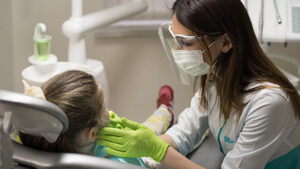Midazolam Proves Top Choice for Pediatric Dental Procedures

Anesthesia Progress – Dental checkups during early childhood are just as important as regular wellness checks by a pediatrician. By kindergarten, 40 percent of children have been diagnosed with early tooth decay or cavities, which can have a negative impact on their overall health. A significant number of these cases will require dental treatment. Due to the anxiety level associated with children and dental procedures, researchers are looking into the effectiveness and post-treatment effects of sedatives used during procedures.
Researchers from The Ohio State University in Columbus, Ohio, working with a private clinician out of Charleston, South Carolina, recently published a study in the current issue of Anesthesia Progress. The study investigates three different regimens for the use of the most commonly used pediatric sedative, midazolam: oral midazolam alone, nasal midazolam, or oral midazolam in combination with other sedative/analgesic medications. The goal was to find a single sedative or a combination of drugs that would reduce both anxiety and uncooperative behavior during dental procedures.
The researchers studied a total of 650 cases of sedation that took place over 24 months in a hospital-based pediatric dental clinic staffed by pediatric dentistry residents. Success rates were determined by procedure completion, behavior during sedation, sedation effectiveness, and number of teeth treated. Patient demographics were fairly balanced with 333 boys and 317 girls ranging in age from 2–3 (125), 3–4 (161), 4–5 (125), and 6 and older (145).
Although the cases were all relatively short in duration, the results of the study showed that all three regimens had completion rates of over 85 percent. Oral midazolam alone proved to be the most effective of the three, followed by nasal midazolam, and then the combination of pharmaceuticals. Complications observed by both clinicians and caregivers were very low with fewer than 4 percent of cases reporting post-procedural nausea or vomiting; approximately 62 percent of these cases involved the combination regimen. Paradoxical reaction, where the sedative caused the opposite effect due to loss of the child’s emotional control, was only present in 6 percent of cases and there was no significant difference among the sedation regimens.
Overall, the researchers found that all three regimens were proven to be effective and safe for children undergoing dental procedures. The researchers note, “In our study, midazolam in several forms and combinations proved effective and safe with minimal side effects. We can recommend these uses of midazolam for necessary treatment in young children.”
Full text of the article, “Safety and Efficacy of 3 Pediatric Midazolam Moderate Regimens,” Anesthesia Progress, Vol. 64, No. 2, 2017, is now available at anesthesiaprogress.org/doi/full/10.2344/anpr-64-02-04.


